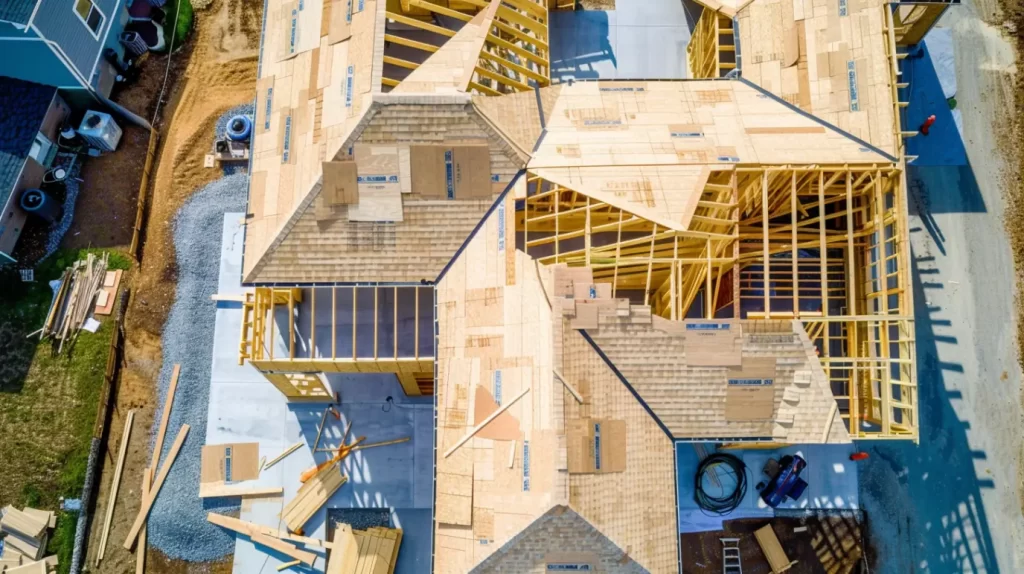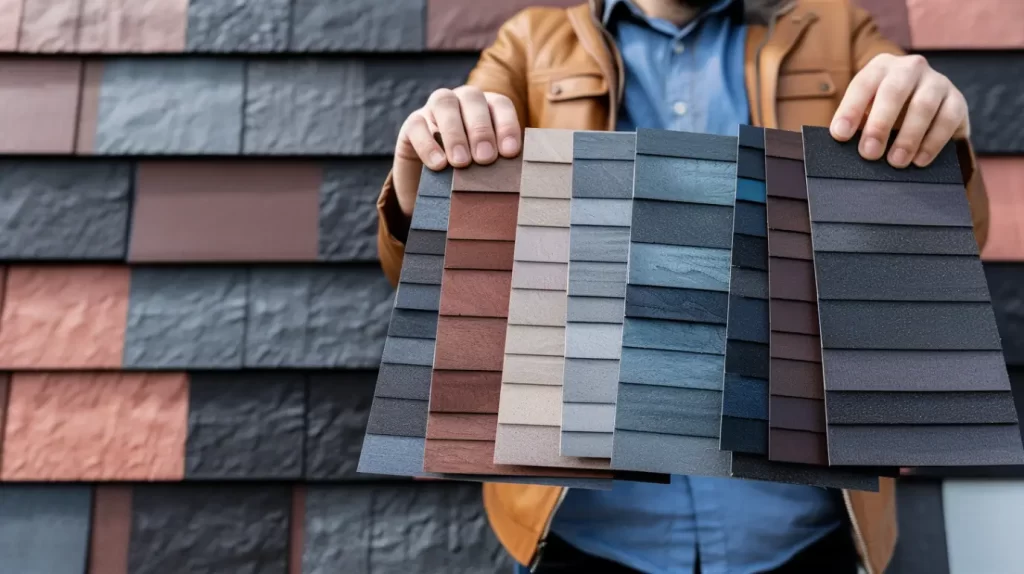When presenting roof plans to HOA boards, it’s essential to understand their requirements and architectural standards. Clearly demonstrate how your plan aligns with community guidelines to enhance approval chances. Consider the aesthetics of roofing materials and ensure they comply with local building codes. Highlight long-term benefits like energy efficiency, which is a focus at Fontaine Roofing in Anaheim, CA. By providing these details, you show board members that you’ve thoroughly considered the project, making the review process smoother for all.
How to Align Roofing Plans with HOA Expectations
Understanding HOA board expectations is key to a smooth approval process. Board members assess proposals based on community standards and architectural guidelines. A detailed proposal that aligns with these rules shows respect for the HOA’s aesthetic goals. Our accolades, including GAF Master Elite Contractor and CertainTeed Shingle Master, demonstrate our commitment to quality. We are also approved applicators for FiberTite and TRI certified. As members of CACM, CAI, and NRCA, we recommend attending HOA meetings to understand approval steps and prepare necessary permits. A proactive approach builds trust with the board and increases your chances of approval.
Contact Us
HOA Requirements Every Roofing Project Must Meet
Understanding HOA architectural guidelines ensures smooth project approval in accordance with local laws. These rules dictate roofing materials for roof work, such as asphalt shingles or metal, to align with community standards. Board members may have preferences for color, texture, and design to maintain aesthetic appeal and protect property values. HOAs play a crucial role in regular inspections to ensure compliance with local building codes. Submitting detailed proposals and formal applications streamlines the review process.
Standard Approval Process and Documentation Needs
Submitting a roof project proposal involves clear steps. Start by discussing with board members to understand architectural guidelines and community standards.
When submitting your formal application, include a detailed proposal with architectural drawings and roofing materials, ensuring compliance with local building codes.
Prepare any necessary permits or paperwork to facilitate a smooth review process. This proactive approach demonstrates your commitment to meeting HOA regulations and helps protect property values in the community.

Creating a Detailed Roofing Plan Proposal
A detailed proposal is essential for your roof plan. Careful planning includes architectural plans and drawings that adhere to HOA guidelines, showcasing how your roof aligns with community standards. Incorporate visual aids and material samples to enhance understanding of the project. Clearly specify the roofing materials and their benefits to strengthen your plan.
This proactive approach addresses potential issues early and demonstrates how your choices will save money over time while maintaining the roof’s structural integrity.
Essential Components of a Winning Proposal
A strong roof plan proposal should clearly outline the project scope, align with HOA regulations, and adhere to community standards. Include architectural drawings that showcase both design aesthetics and structural integrity, ensuring compliance with local building codes.
List the approved roofing materials, such as asphalt shingles or metal roofs. Provide budget estimates, including labor costs, and detail necessary permits.
Establish a timeline for each phase of the project. A proactive approach identifies potential issues early, facilitating a smoother approval process and demonstrating your commitment to timely completion.
Using Visuals, Plans, and Samples in Presentations
Visual aids clarify your roof plan. Architectural drawings demonstrate the roof’s strength and safety, while material samples let board members assess aesthetics and compatibility with the home’s style. High-quality images of similar projects can illustrate adherence to community standards. Combining these elements in your proposal enhances understanding and streamlines the approval process for the HOA board.

HOA-Compliant Roofing Material Selections
Choosing the right roofing materials is essential for meeting HOA rules and enhancing neighborhood aesthetics. Discuss approved options like suitable materials such as asphalt shingles and metal roofing, as they can increase property values and curb appeal. Highlight each option’s durability and energy efficiency, and mention manufacturer warranties to emphasize added value. This proactive approach will demonstrate to board members that selecting the best roofing, considering the complexity of the project, keeps maintenance costs low while showing your commitment to the neighborhood’s long-term appearance and quality.
Comparing Approved Materials and Manufacturers
Check accepted roofing materials and manufacturers to align with HOA guidelines. Asphalt shingles are often permitted due to their affordability and variety. Metal roofing is durable and energy-efficient. Ensure manufacturers meet community standards for aesthetics and durability. Consider warranties and maintenance to demonstrate value and low upkeep to board members. These factors impact long-term property values.
Durability, Design, and Warranty Needs
Durability is key when selecting roofing materials, and regular roof maintenance is essential to prevent water damage. The right choice ensures the roof withstands weather and maintains strength over time. Opt for visually appealing materials that align with community standards to enhance curb appeal and protect property values.
Warranty considerations are vital for many homeowners. A solid warranty offers peace of mind, and presenting documentation on material longevity, maintenance needs, and manufacturer promises builds trust with the HOA board.
Adhering to local regulations and architectural guidelines is also crucial. Highlighting compliance demonstrates that your proposal aligns with community expectations, reinforcing the project’s long-term viability.

How to Show Value to HOA Decision-Makers
When discussing finances with the HOA board, clarity and professionalism are key. Begin with budget numbers aligned with the community’s architectural guidelines. Emphasize how quality roofing materials and regular maintenance and upkeep can reduce long-term costs and avoid costly repairs. Highlight energy efficiency benefits that enhance property values. Mention potential insurance advantages with a better roof, reassuring board members of its durability. Focusing on these points demonstrates the plan’s value and supports community standards.
Budget Estimates and Long-Term Savings
Providing a clear budget estimate demonstrates proactive financial planning, reassuring the HOA board about the roof replacement project’s success. Highlighting the importance of regular roof inspections and potential long-term savings from energy-efficient materials—such as reduced maintenance costs, lower energy bills, and a reduced likelihood of special assessments or frequent repairs—is crucial.
Moreover, explaining how the new roof can enhance property values and reduce repair frequency adds significant value to the project in terms of home value in the eyes of board members. This helps them appreciate the investment’s benefits for everyone in the long run.
Energy, Compliance & Insurance Factors
Emphasizing energy efficiency in roof plans is crucial. Energy-efficient materials can lower utility bills and enhance property values. Ensuring compliance with local building codes guarantees adherence to safety and HOA style guidelines. Additionally, some roofing materials can reduce insurance costs due to their durability, minimizing damage risk, which many insurance companies recognize. This financial incentive can persuade board members to approve the project, addressing key concerns and fostering long-term satisfaction.
What’s Next
In the end, talking about roof plans with HOA board members means property owners need to know what these groups expect and follow all community standards closely. A detailed proposal from Fontaine Roofing in Anaheim, CA, should show the right roofing materials, how the plan meets local building codes, and any cost benefits that could come from it. It helps to focus on how good the roof will look and its strong build. This way, people can make sure board members feel good about it. It also helps to keep property values steady in the community.
Read our blog: How Roof Color Affects Heat Retention and Shared Utility Expenses
Frequently Asked Questions
What follow-up steps help secure HOA board approval?
After sharing your roof plan, promptly send a thank-you email to the HOA board. Address any questions or concerns they may have. If they require documents from you, provide them quickly. Maintain communication to show your commitment and assist in their approval decision.
Is roofing covered under a HOA?
Yes, your homeowners association (HOA) in the United States usually controls what happens with roofing. They set rules about roofing materials and styles, including flat concrete tiles, that you can use. These rules help keep the look of the homes the same. They also help make sure property values stay good in the area. Make sure you look at your HOA rules to know what is allowed for roofing.

